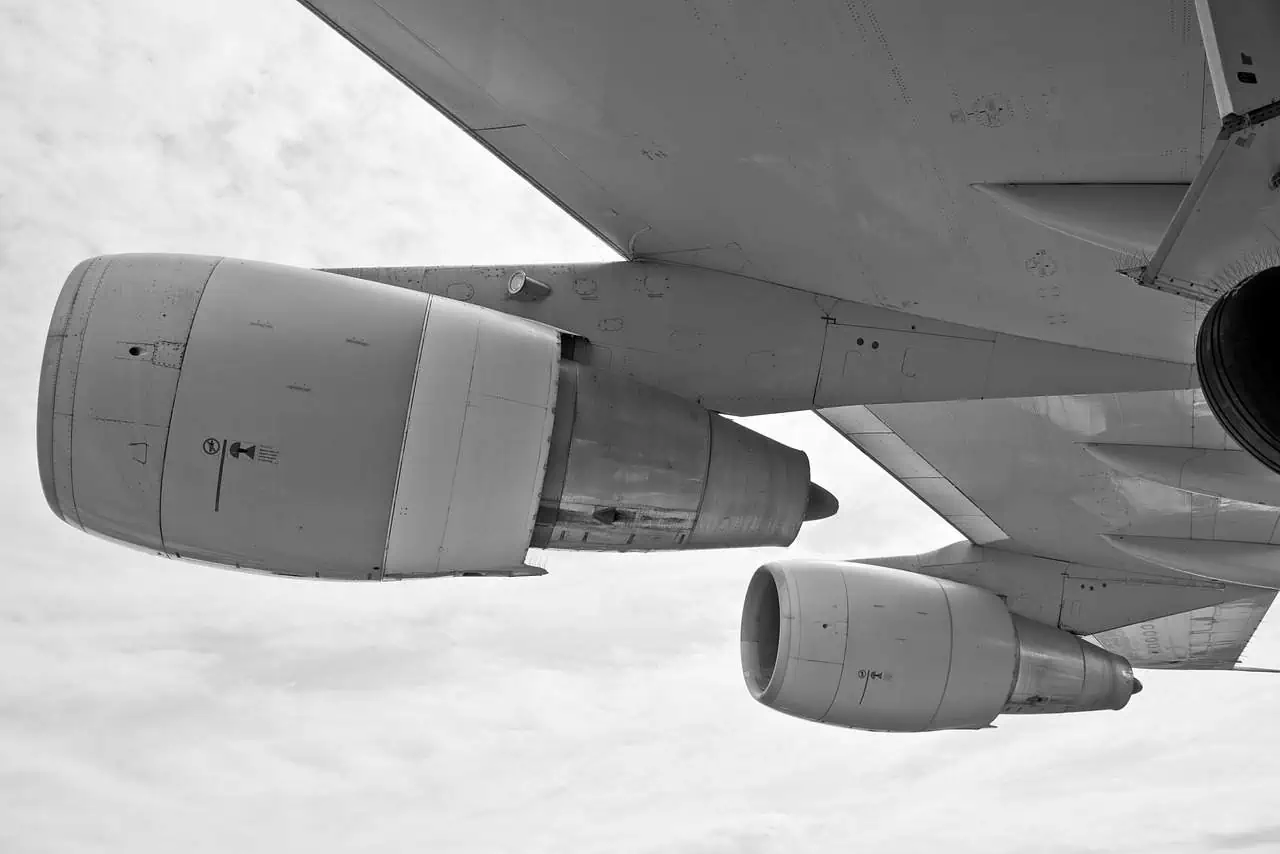
When it comes to aircraft design, one may wonder Why is fuel stored in wings of aircraft but not as tank inside the aircraft. The answer lies in the significance of fuel storage for the safety and efficiency of the aircraft.
Why is fuel stored in the wings of the aircraft?
Aircraft need to carry a substantial amount of fuel for their long journeys. Storing good amount of fuel in the wings offers numerous advantages:
- Weight Distribution: Placing fuel in the wings helps distribute the weight evenly across the aircraft, ensuring stability during flight. This placement helps maintain the aircraft’s center of gravity within safe limits.
- Structural Reinforcement: The wings of an aircraft are designed to handle significant loads. By integrating fuel storage within the wing structure, it adds structural reinforcement and contributes to the overall strength of the aircraft.
Factors to consider for fuel storage in aircraft
- Safety: Fuel storage in the wings reduces the risk of damage or fire in the event of an accident. It keeps the fuel away from the occupied areas of the plane, minimizing potential hazards.
- Efficiency: Placing fuel in the wings allows for easier fuel management, as it can be easily pumped to the engines. This improves the fuel flow efficiency and reduces the impact on the aircraft’s balance and performance.
In conclusion, storing fuel in the wings of an aircraft ensures proper weight distribution, structural reinforcement, safety, and fuel efficiency. It is a vital aspect of aircraft design that contributes to the safe and efficient operation of air travel.
Advantages of Fuel Storage in Wings
- Increased stability and balance in flight
Storing fuel in the wings of an aircraft provides increased stability and balance during flight. Placing the fuel in the wings helps airplane distribute the weight evenly across the aircraft’s structure, preventing it from becoming too heavy at one end. This balanced weight distribution helps maintain stability and reduces the risk of the aircraft tipping or tilting during maneuvers.
- Optimal use of wing space
Wings are an integral part of an aircraft’s design, providing lift and supporting its weight. By storing fuel within the wings, aircraft designers can make efficient use of the available space. This allows for larger fuel storage capacity without compromising the overall design or limiting other important components.

- Reduced risk of fuel leakage
Storing fuel in the wings reduces the risk of fuel leakage during flight. The fuel tanks within the wings are designed with multiple layers of protection, including seals and coatings, to prevent leaks. Additionally, any fuel that does leak is contained within the wings, minimizing the potential for damage to other areas of the aircraft.
In conclusion, storing fuel in the wings of an aircraft offers several advantages, including increased stability and balance in flight, optimal use of wing space, and reduced risk of fuel leakage. These benefits contribute to safer and more efficient air travel.
Fuel Storage System in Wings
Have you ever wondered why aircraft store fuel in their wings? It may seem like a peculiar concept, but there are specific reasons behind this design choice.
- Design and structure of wing fuel tanks
The wings of an aircraft are specifically designed to accommodate fuel storage. The empty space inside the wings is utilized to store large quantities of fuel, offering several advantages. The structure of the wings provides optimal weight distribution and stability, ensuring the aircraft remains balanced during flight.
- Fuel transfer and management system
The fuel stored in the wings is efficiently managed by a comprehensive fuel transfer and management system. This system involves pumps, valves, and sensors that monitor and control the flow of fuel to the engines, ensuring a consistent supply throughout the flight.

- Safety measures for fuel storage in wings
Safety is of paramount importance in aviation, and storing fuel in the wings is no exception. The wings are constructed with reinforced materials that are resistant to fire and puncture. Moreover, rigorous safety protocols are in place to prevent fuel leakage or ignition, including regular inspections, maintenance, and adherence to strict regulations.
By storing fuel in the wings, aircraft can distribute the weight more evenly, optimize performance, and enhance safety measures. This innovative design choice has become an integral part of modern aircraft engineering.
Efficiency and Performance Benefits
- Weight distribution and aerodynamics
Fuel storage in the wings of an aircraft is an integral part of its design, providing several benefits. First and foremost, it helps with weight distribution.
Placing the fuel in the wings helps to spread the weight evenly across the aircraft, ensuring stability during flight. This distribution also improves the overall aerodynamics, reducing drag and enhancing the aircraft’s performance.
Additionally, having fuel stored in the wings helps to lower the aircraft’s center of gravity, contributing to improved handling and maneuverability.
- Improved fuel efficiency
Another reason why fuel is stored in the wings of an aircraft is to maximize fuel efficiency. By placing the fuel in the wings, it allows for shorter fuel lines and reduces the chances of fuel contamination. This setup also allows for easier monitoring and control of fuel levels.
Additionally, placing the fuel in the wings frees up space in other parts of the aircraft, providing room for other necessary components or cargo. Overall, storing fuel in the wings enhances the aircraft’s performance while optimizing fuel usage, making it a crucial aspect of aircraft design.
How Much Fuel Can Modern Aircraft Store?
Fuel storage capacity of Modern aircraft can varying depending on their size, design, and intended purpose. Here is a general overview of the fuel storage capacities for different types of modern aircraft:
- Commercial Airliners: Large commercial aircraft like the Boeing 777 or Airbus A380 can typically store between 100,000 to 150,000 pounds (45,000 to 68,000 kilograms) of fuel. This amount can vary based on the specific model and range requirements.
- Regional Jets: Smaller regional jets, such as the Embraer E175 or Bombardier CRJ700, generally have fuel capacities ranging from 10,000 to 20,000 pounds (4,500 to 9,000 kilograms).
- Business Jets: Business jets vary widely in size and fuel capacity. Light jets like the Cessna Citation CJ3 might hold around 4,000 to 5,000 pounds (1,800 to 2,300 kilograms) of fuel, while larger business jets like the Gulfstream G650 can store over 45,000 pounds (20,000 kilograms).
- Military Aircraft: The fuel capacity of military aircraft can vary significantly based on their role. Fighter jets like the F-16 may carry around 7,000 to 12,000 pounds (3,200 to 5,400 kilograms) of fuel, whereas long-range bombers like the B-2 Spirit can carry tens of thousands of pounds of fuel.
- General Aviation Aircraft: Small general aviation planes, such as single-engine Cessnas or Piper aircraft, typically have fuel capacities ranging from 20 to 100 gallons (75 to 380 liters). However, this can vary widely depending on the aircraft’s size and design.
- Halo: Helicopters generally have smaller fuel capacities compared to fixed-wing aircraft. A typical helicopter may carry between 100 to 800 gallons (380 to 3,000 liters) of fuel, depending on its size and purpose.
It’s important to note that these figures are approximate and can vary based on specific aircraft models, modifications, and mission requirements. Fuel capacity is a critical consideration in aircraft design and operation, as it directly impacts the aircraft’s range and mission capabilities.
Also read:


